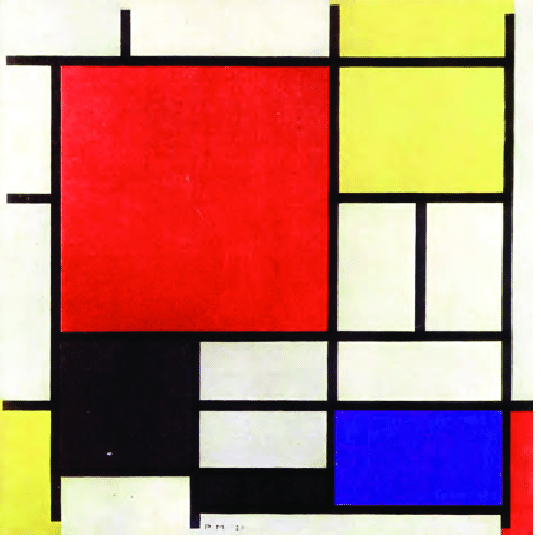
Piet Mondrian (1872–1944) is a Dutch abstract painter and thinker who is clearly one of the greatest artists of the 20thcentury. Mondrian’s paintings, reduced to simple geometric forms, have become iconic. However, few consider that this work was a result of his quest for universal values and beauty.
This search led him to limit his palate to the three primary colors (the colors when mixed make all other colors), black, white and grey (the three primary values) and horizontal and vertical lines. Mondrian not only impacted the course of several art movements, architecture and fashion, but Modernism itself.
Traditional compositions tend to have a center or focal point — a spot around which other elements are organized. At a time when, culturally, the notion of center seems to be losing its authority, it is interesting to consider compositions that defy this notion of center. I wrote earlier about Jackson Pollock’s splatter paintings, which created fields rather than a single focal point.
Greg Schufreider, a friend and philosopher, introduced me to the idea that Mondrian may have been searching for a centerless composition as well.
At first glance it seems that a focal point should be easily located, but pinpointing the exact location proves elusive. Consider each line, form and color’s “visual weight” — its ability to command your attention and stand out from the other compositional elements. Now point to the place where all those elements are visually balanced — but don’t burst a blood vessel – in this case it may not exist. If attempting to locate a visual center is too unsettling, maybe you should pour yourself a stiff drink or perhaps take up yoga.
